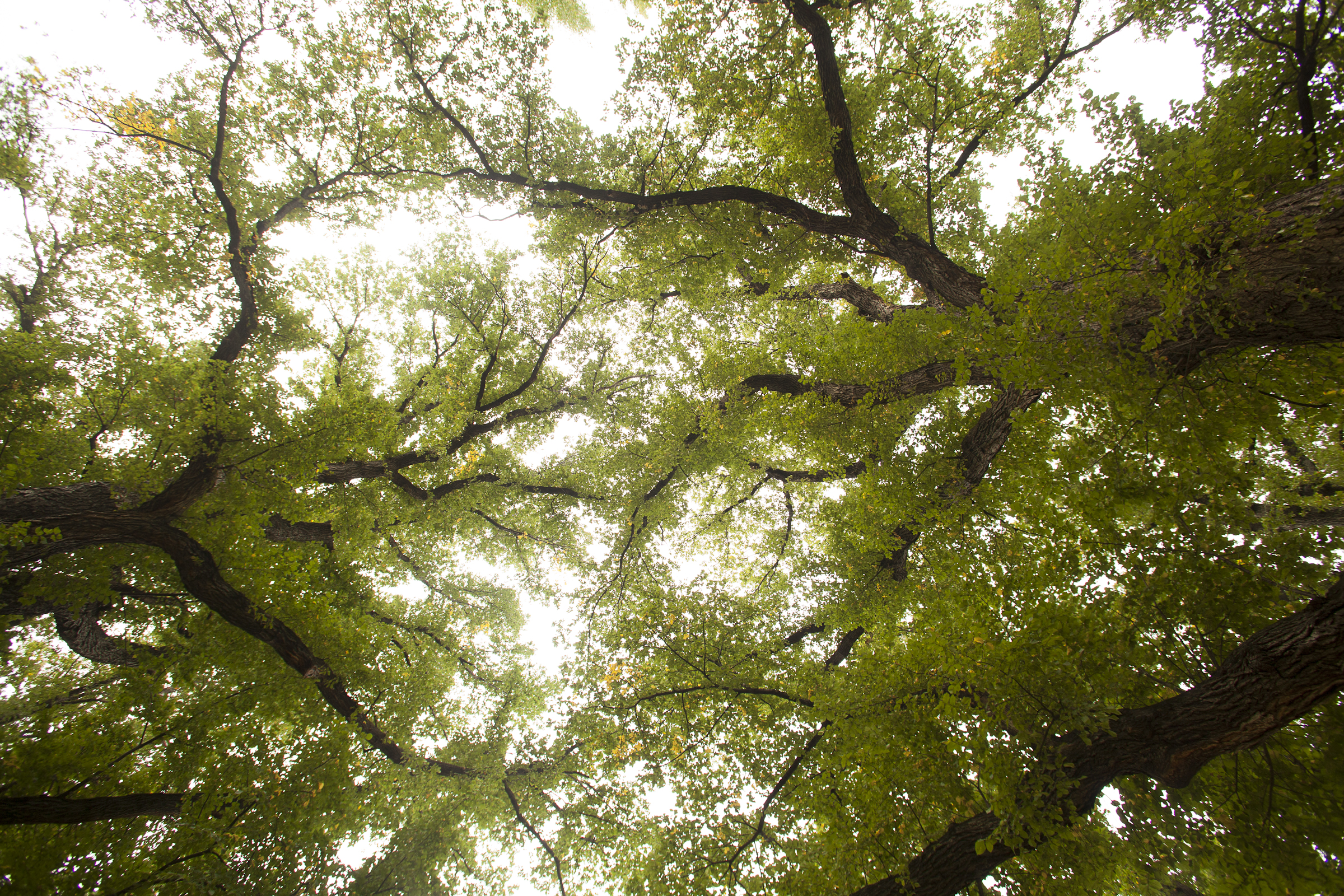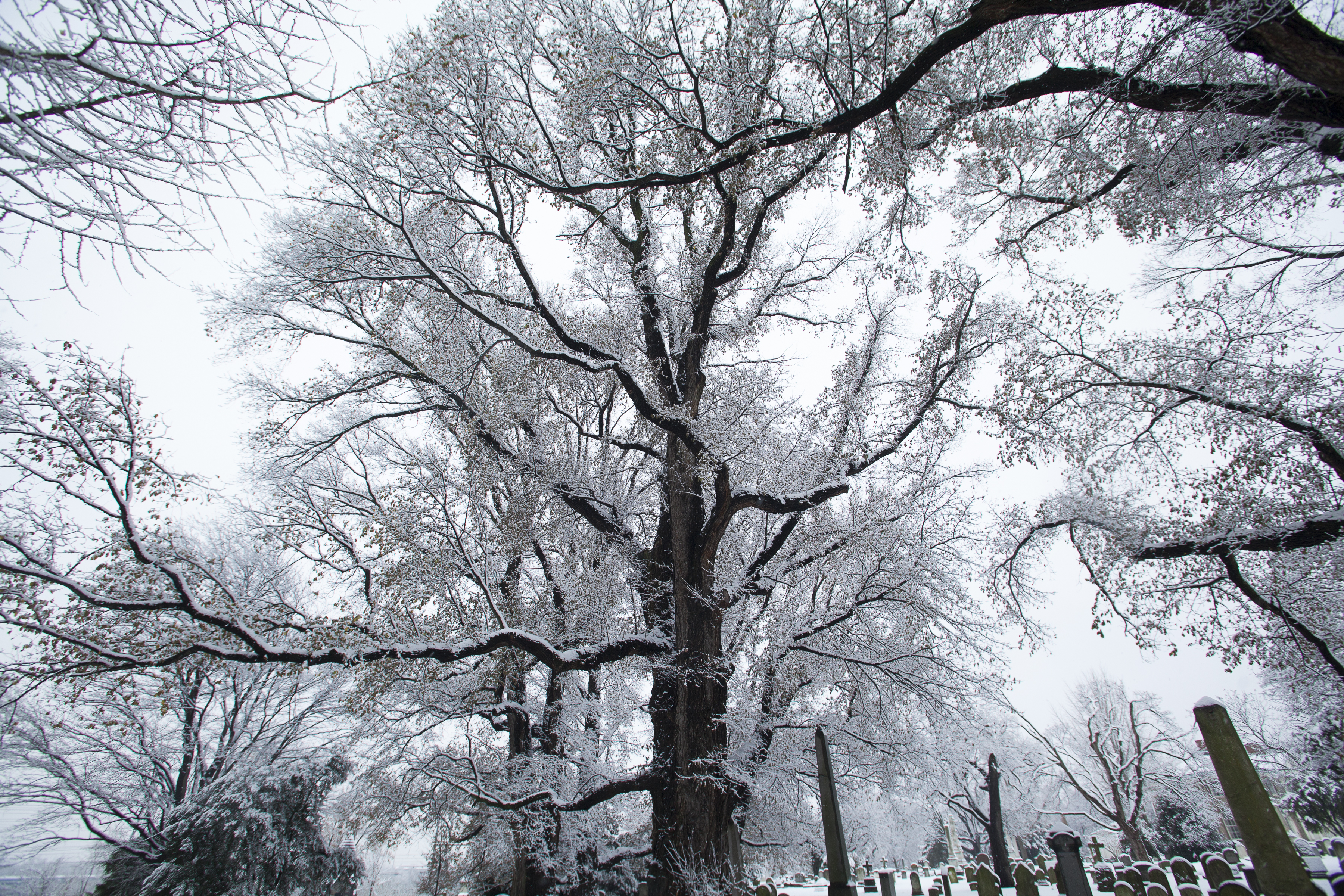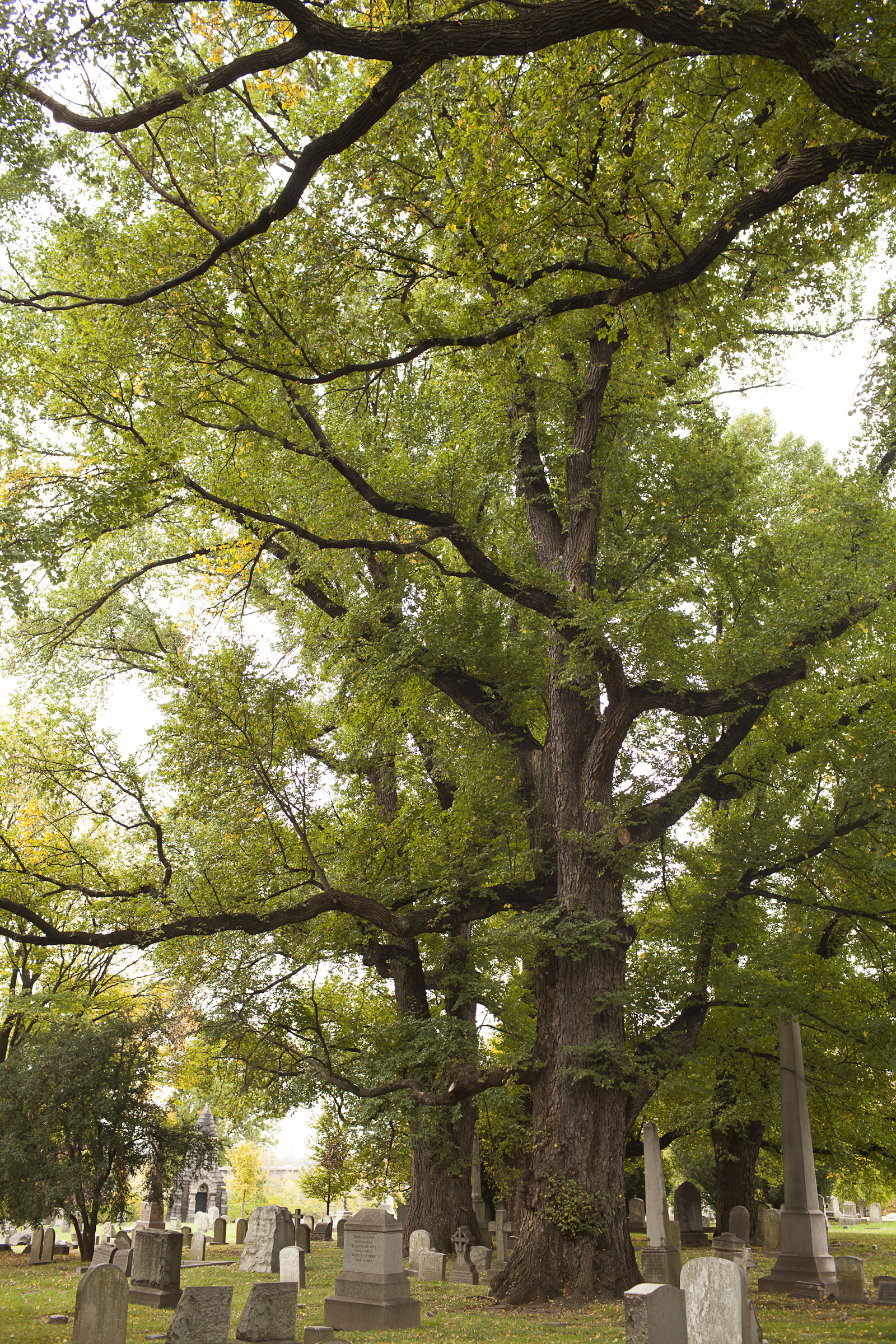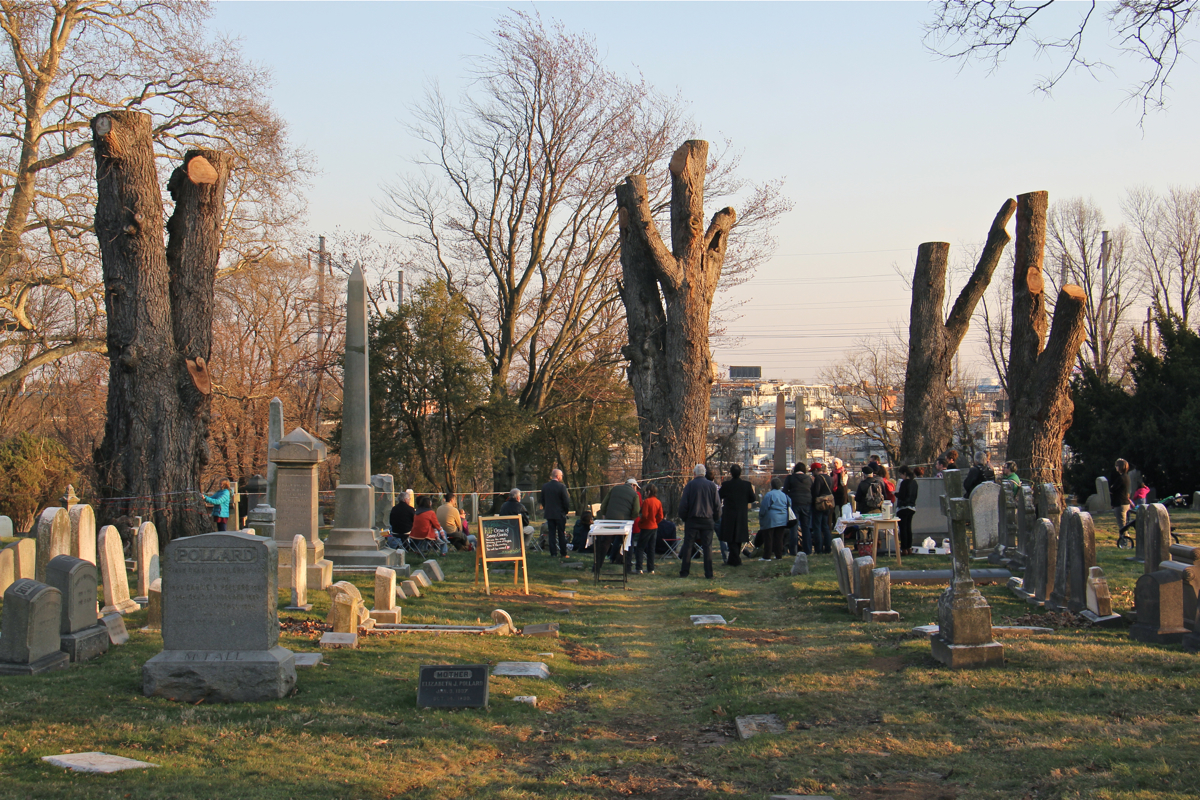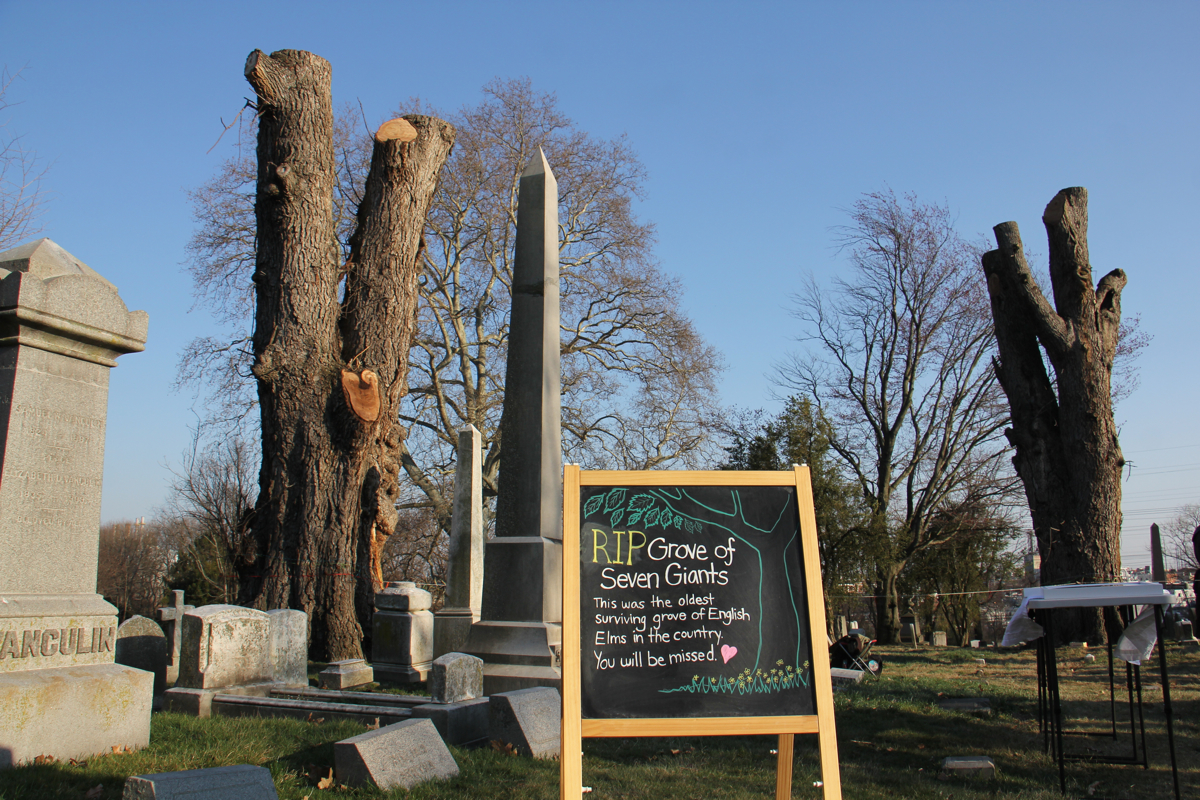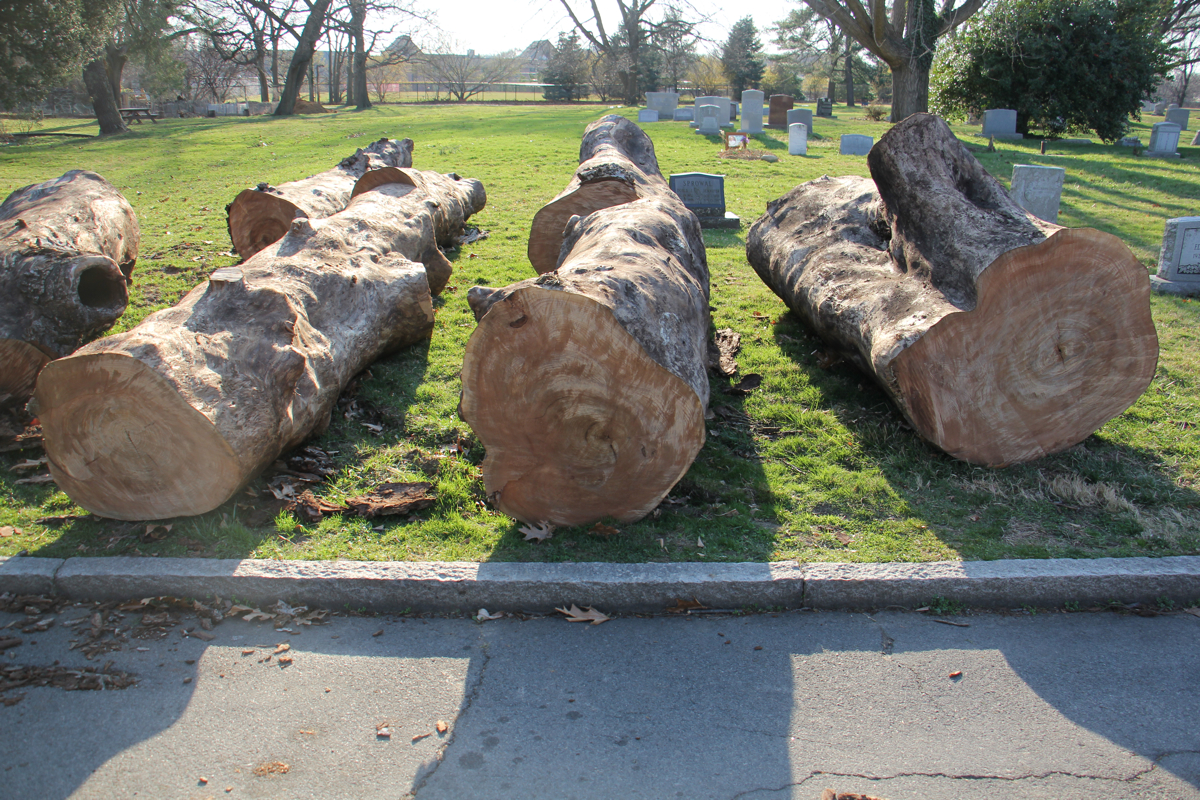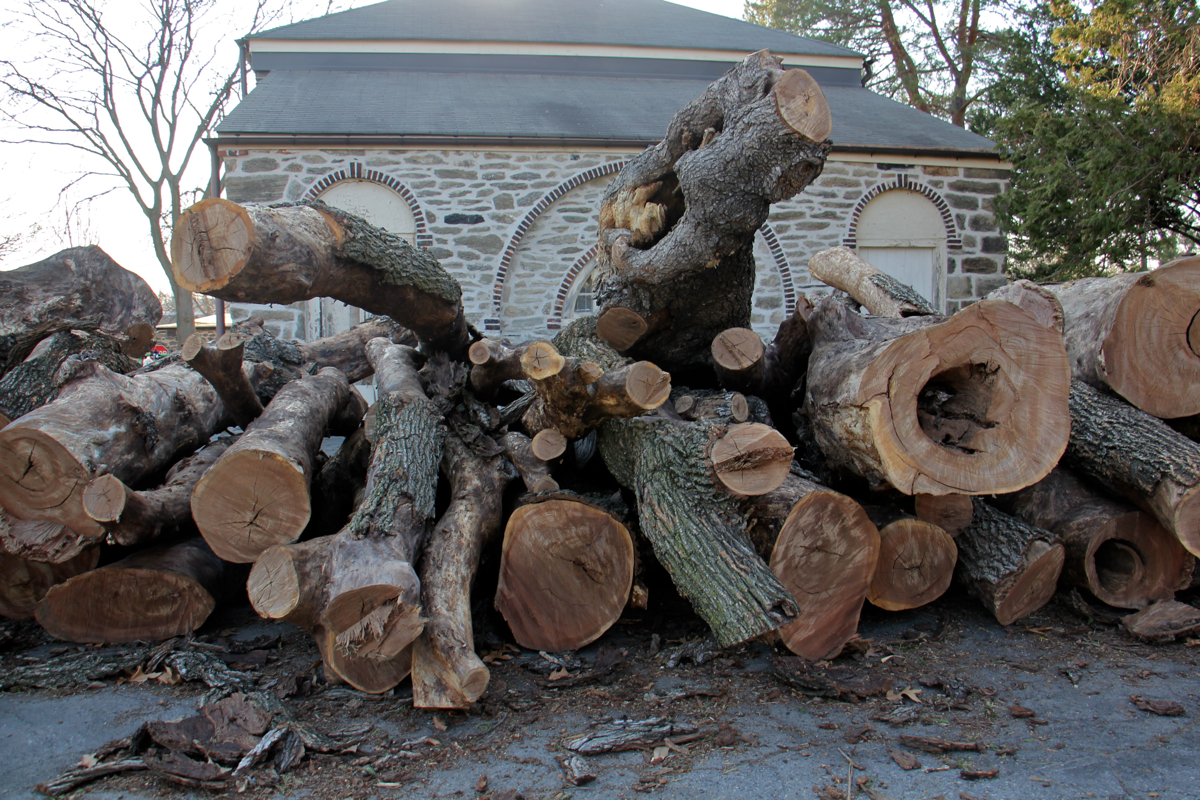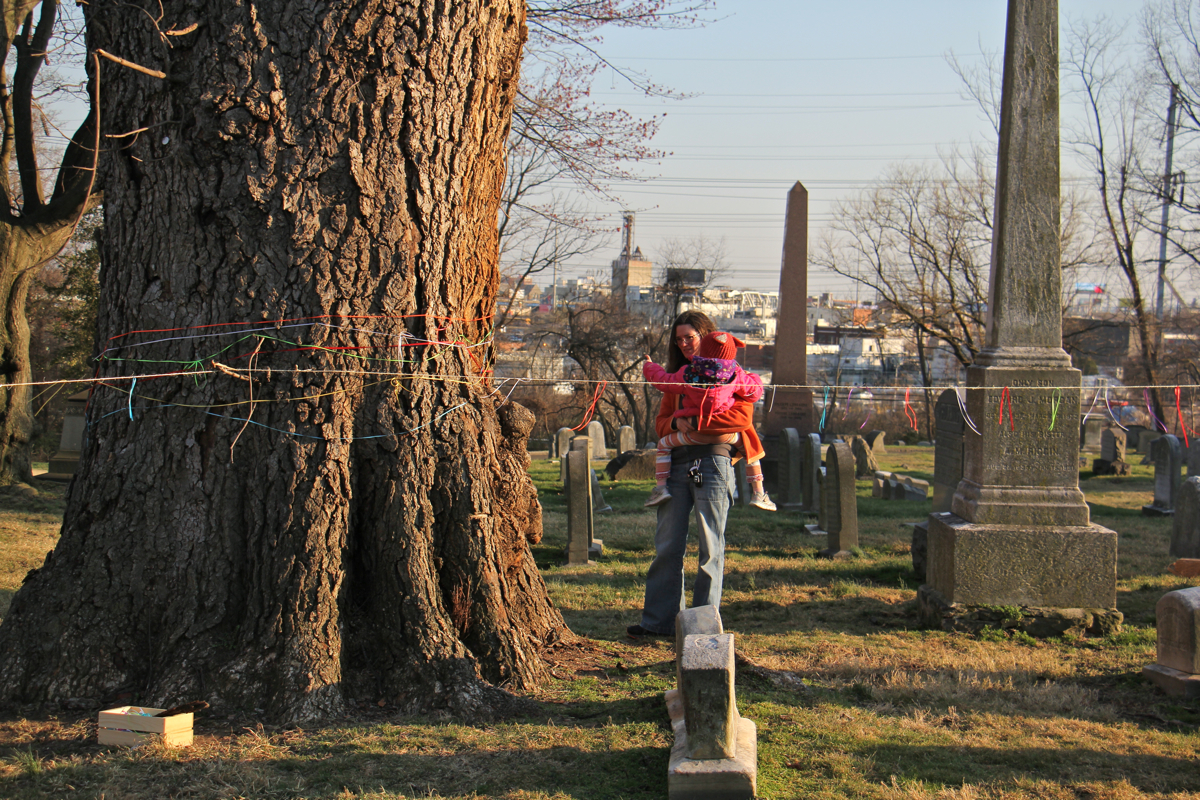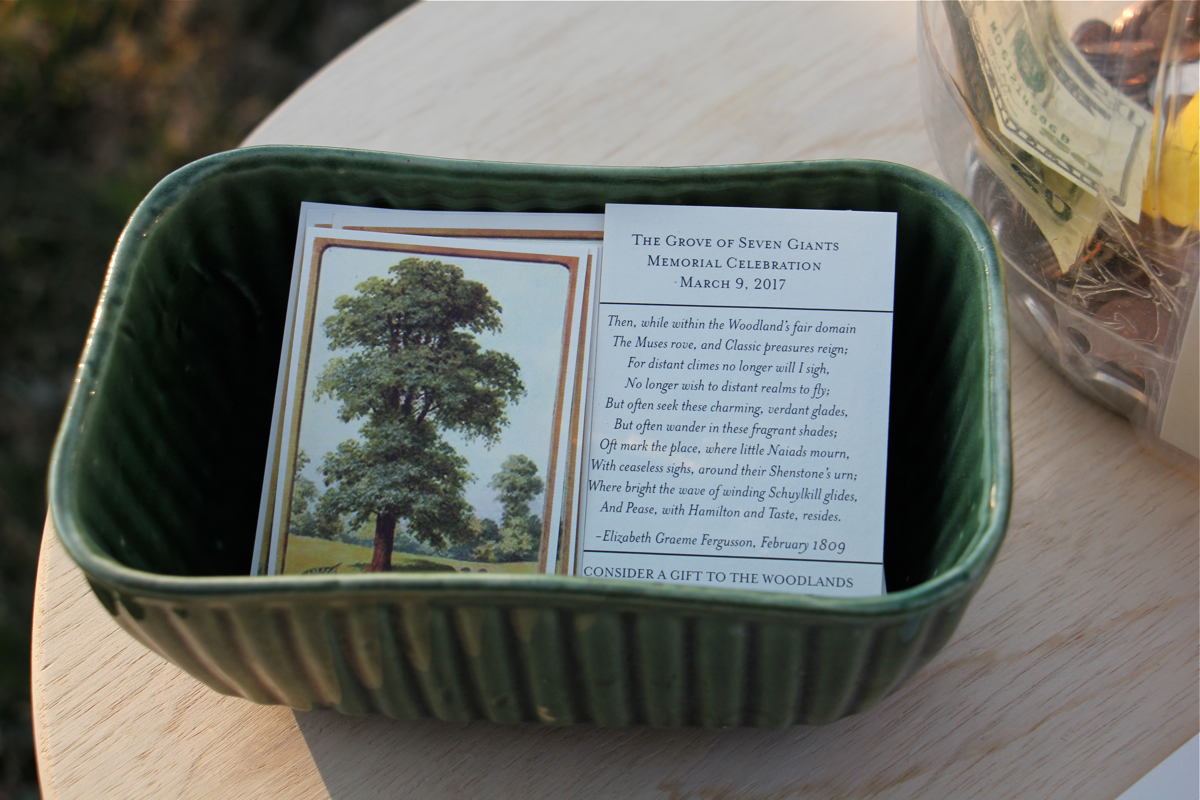Saying farewell to the last remaining grove of English Elms in the country
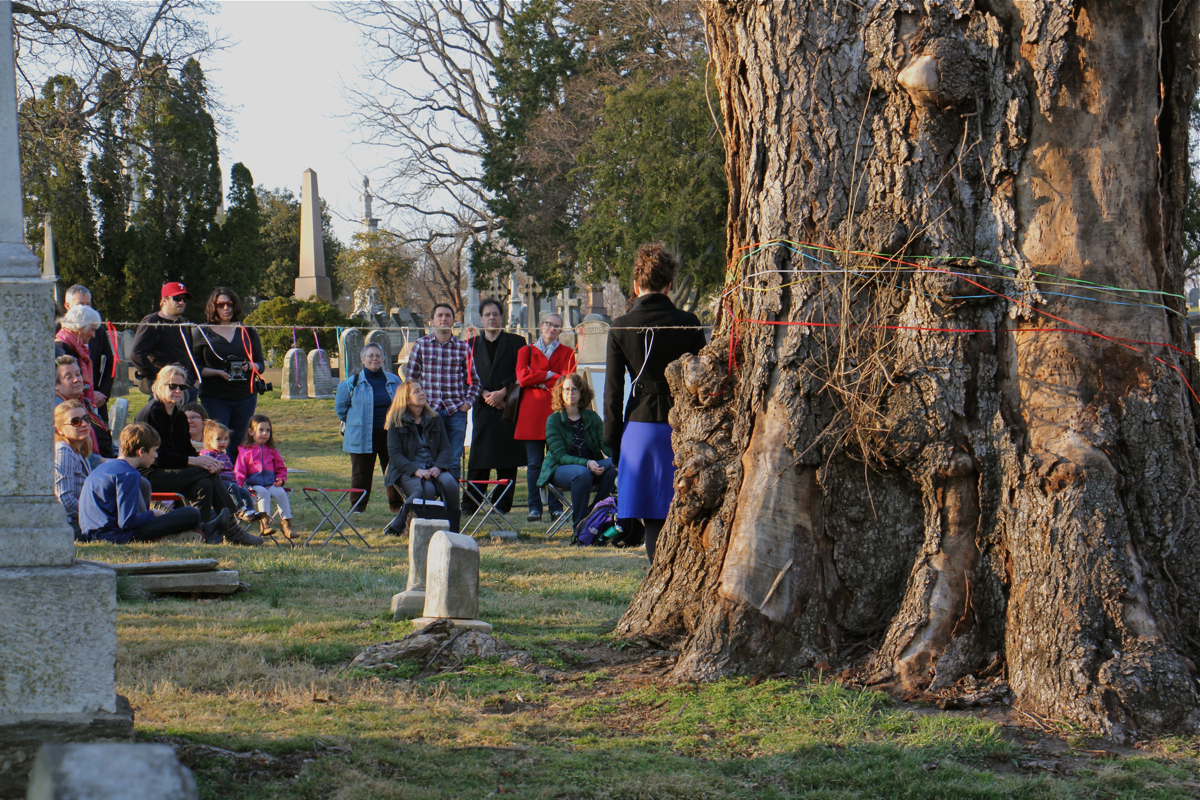
The Woodlands cemetery is the biggest open space near University City in West Philadelphia. It has beautiful and rare trees and many neighbors use it as a park. On Thursday night, it hosted a very unusual funeral.
“Welcome to all of you to the ceremony, the event, the funeral for the Seven Giants,’’ said Beth Palubinsky.
About 60 neighbors and tree lovers were sitting next to graves, mourning an historic group of trees. They gathered around the remains of four dead elms, chopped down to 20-foot-tall stumps, almost a quarter of what they used to be.
They gathered to honor the lives of the “Seven Giants,” seven enormous English Elms planted next to each other more than 100 years ago.
“People have been just knocked out by the seven giants and here they are to say farewell because it means a lot to them,” said Palubinsky, who lives near the Woodlands and gives tours of the cemetery.
A couple of years ago these trees were 90 feet tall and had big horizontal branches that looked like arms. That’s why people called them the seven giants.
Their shade was perfect on a summer day. Visitors loved to sit under them and listen to the sound of the leaves moving with the wind. They say it felt like a cathedral, a magic spot to escape the city.
Ned Barnard, a tree enthusiast who has written books about city trees in New York City and Philadelphia, also admires them.
“It’s a rare thing to see a group of such large, commanding, amazingly impressive English Elms,” Barnard said. “I’ve never saw anything like it anywhere else.”
In fact, tree experts believe this was the last remaining English Elm grove of its kind in the country.
Elms were very common on residential avenues and in city parks in the early 1900s. But most were destroyed by Dutch elm disease (DED), caused by a fungi and spread by elm bark beetles.
“No one really knows why these trees survived for so long,” said Joel Fry, curator at nearby Bartram’s Garden, which shares an interesting botanical history with The Woodlands. “When every other big elm in the Philadelphia area, baring maybe a few, maybe a 1% have survived, they all died in the 50s and 60s and early 70s.”
Historians believe the first English Elms were first planted at the Woodlands in the 1700s. The land was owned by William Hamilton, a wealthy plant collector who introduced rare species to Philadelphia.
In 2014, three of the Seven Giants got Dutch elm disease. Jessica Baumert, director of The Woodlands, said they immediately removed them and treated the other four –hoping they wouldn’t get infected. They looked fairly healthy, until last summer.
“One of them didn’t look so well when it leafed out and we were pretty confident that it probably had Dutch elm disease,” Baumert said. And then as the growing season last summer went on, it slowly just…, by the end of the summer we had four giant, dead, very obviously dead trees on the landscape”.
Baumert says she was too sad to make an announcement then.
But last week she decided it was time. She wrote an obituary for the Seven Giants and announced their death on Facebook. She was surprised by the reaction.
“Lots of lots of shares,” Baumert said. “People tagging other people saying ‘Oh no! Remember when we visited these trees two years ago’, you know.”
And because The Woodlands is a cemetery, they decided to have a funeral for the trees. There was a cake decorated with the seven giants, a guest book, photos of the trees and even a memorial card.
“I’m very happy to live in a place where people will have a funeral for a tree,” said Elizabeth Womack, a neighbor of the Woodlands who loved the presence of the elms. “I kind of love that, and I’m also sad.”
The seven giants are gone, but three new –disease resistant– American Elms were planted were the first three were.
And at the funeral, tree experts discovered a new tree growing from a root of an original elm.
Baumert is optimistic, but also realistic.
“I’ll be long dead before there are trees reach anything even close to the grove of seven giants,” she said.
We’ll just have to wait a hundred years.
WHYY is your source for fact-based, in-depth journalism and information. As a nonprofit organization, we rely on financial support from readers like you. Please give today.



